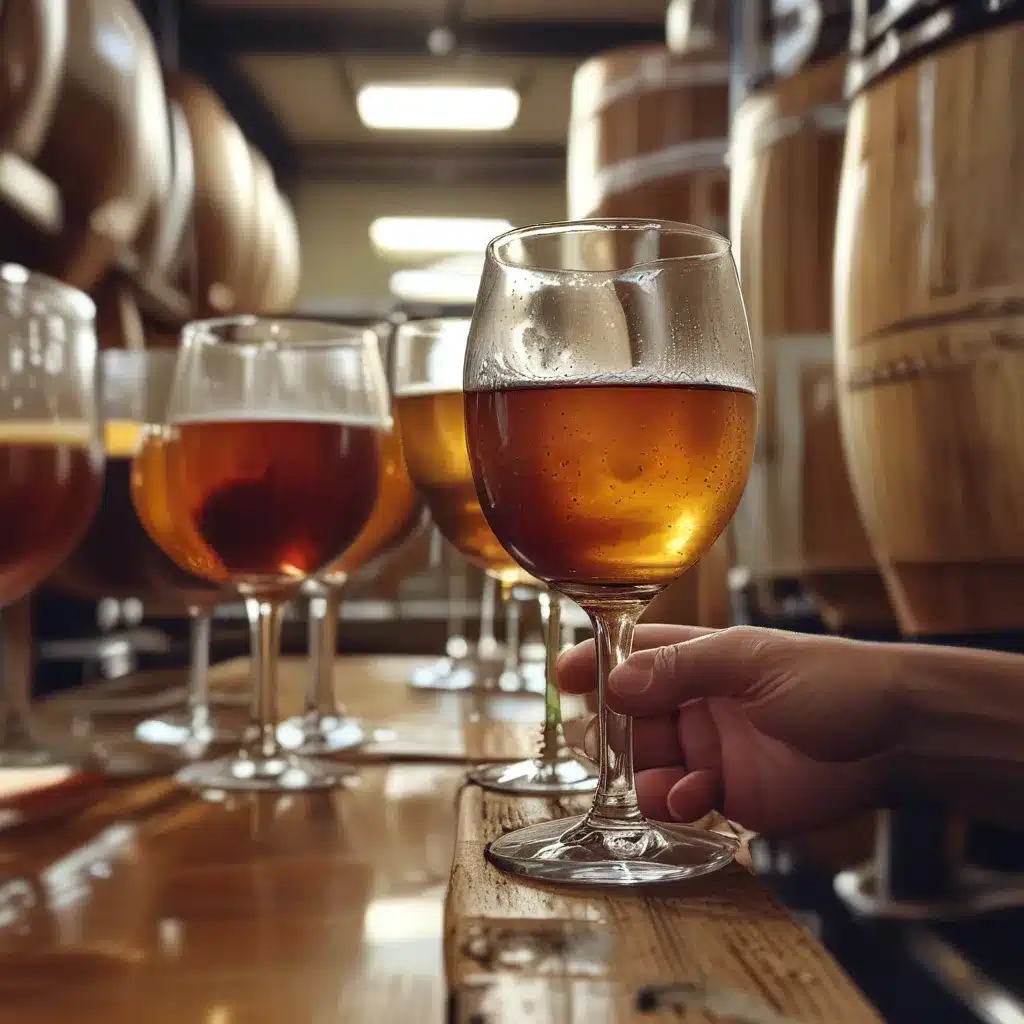
Down the Rabbit Hole of Wild Yeast Wizardry
Pull up a cozy chair, my fellow beer enthusiasts, because I’m about to take you on a wild and wonderfully unpredic
table journey through the realm of spontaneous fermentation. It’s a captivating brewing technique that’s been around for centuries, and let me tell you, it’s like Alice tumbling down the rabbit hole – the deeper you delve, the more fascinating (and occasionally bizarre) it gets.
Now, you might be thinking, “Spontaneous fermentation? Isn’t that just a fancy way of saying ‘letting nature run wild’ in my beer?” Well, my friend, you’re not wrong. But there’s so much more to it than that. It’s a delicate dance between the brewer, the environment, and the invisible army of yeasts and bacteria that come together to create beers unlike any other.
The Microbial Maestros
Let’s start by unpacking the science behind this whole spontaneous fermentation thing. You see, when brewers use traditional methods, they’ll carefully select a specific strain of yeast to inoculate their wort (that’s the sugary liquid that will eventually become beer). But with spontaneous fermentation, we’re letting nature take the reins.
As the wort cools in the coolship, it’s exposed to the wild yeast and bacteria floating around in the air. These microscopic maestros – Saccharomyces, Brettanomyces, and an entire ensemble of lactic acid bacteria – begin their alchemical dance, consuming the sugars and transforming them into a complex symphony of flavors.
It’s like an improvisational jazz performance, where each microorganism brings its own unique flair to the mix. Some might contribute fruity esters, while others add earthy, funky notes. And the best part? No two batches will ever be exactly the same, because the cast of characters is always different, depending on the local terroir.
Terroir, Tapestry, and Taste
Speaking of terroir, that’s a big part of what makes spontaneously fermented beers so fascinating. Just like wine, the specific microbes present in a given brewing environment can impart a distinct regional character to the final product. It’s as if the beer is a love letter to the land from which it hails.
Imagine taking a sip of a lambic from the Pajottenland region of Belgium. The flavors might transport you to a sun-dappled orchard, with notes of tart cherries and earthy undertones that evoke the very essence of that particular corner of the world. It’s a sensory experience that goes far beyond just the taste buds.
And the way these flavors develop over time, as the beer ages in those oak barrels? It’s like watching a tapestry unfold, with each thread of flavor gradually revealing itself, creating a truly mesmerizing and ever-evolving work of art.
The Thrill of the Unpredictable
Now, I know what you’re thinking: “If I can’t control the fermentation process, won’t that lead to a bunch of off-flavors and potential disasters?” Well, my friends, that’s all part of the adventure.
Spontaneous fermentation can certainly present its fair share of challenges, from funky barnyard aromas to potential microbial contamination. But for many brewers, that’s all part of the allure. It’s about embracing the unpredictability, the surprises, and the sheer thrill of watching your creation transform in ways you never could have imagined.
Imagine the anticipation of cracking open a bottle of your spontaneously fermented creation, not knowing quite what to expect. Will it be tart and refreshing, or maybe even a little wild and unruly? The journey of discovery is half the fun, and the payoff can be utterly sublime.
A Living, Breathing Tradition
The roots of spontaneous fermentation stretch back centuries, long before the concept of microorganisms was even a glimmer in anyone’s mind. Ancient brewers in places like Belgium and Germany observed that certain beers would ferment on their own when left exposed to the air, and they quickly learned to harness this phenomenon to create their iconic styles.
These traditional techniques have been passed down through generations, and modern-day brewers are keeping the legacy alive. They’re embracing the unpredictability, the challenges, and the sheer joy of watching nature work its magic, one delicious sip at a time.
From the lambics of Belgium to the Berliner Weisse of Germany, the world of spontaneously fermented beers is a rabbit hole worth exploring. And who knows what wonders you might find lurking in the unexpected corners of your own local brewing scene?
Raising a Glass to the Unpredictable
So, my fellow beer enthusiasts, I invite you to join me in raising a glass to the wild and wonderful world of spontaneous fermentation. It’s a journey of discovery, a celebration of terroir, and a testament to the power of letting nature take the wheel.
Whether you’re a seasoned spontaneous fermentation aficionado or a curious newcomer, there’s always more to explore. So go forth, embrace the unpredictable, and let your taste buds be your guide on this delightful adventure. Cheers, and happy brewing!



















